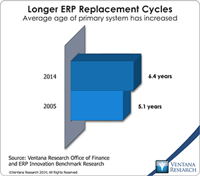
Like other vendors of cloud-based ERP software, NetSuite offers the key benefits of software as a service (SaaS): a smaller upfront investment, faster time to value and potentially lower operating costs. Beyond that NetSuite’s essential point of competitive differentiation from is broad functionality beyond financial management, including capabilities for customer relationship management (CRM), professional services automation (PSA) and human capital management (HCM). These components make it...
Topics: Microsoft, Mobile, SaaS, Sales, Customer Experience, ERP, HCM, Human Capital, Office of Finance, Operational Performance Management (OPM), communications, Dynamics AX, Dynamics GP, Dynamics NAV Dynamics SL, PSA, Sage Software, UI, Unit4, Analytics, Business Analytics, Cloud Computing, Business Performance Management (BPM), CFO, CRM, Customer Performance Management (CPM), Financial Performance Management (FPM), FinancialForce, HR, Infor, Sales Performance Management (SPM), Supply Chain Performance Management (SCPM), Workforce Performance Management (WPM), Social, Financial Performance Management, FPM, Plex, Professional Services Automation, Workday Collaboration










